Risk Control
Top Risk Assessment Methods in Software QA
Curious about the top risk assessment methods in software QA and how they can impact decision-making and problem-solving? Keep reading to enhance your understanding.

It may not be entirely clear to us just how greatly efficient risk assessment techniques can enhance the success of software quality assurance.
The ability to identify, analyze, evaluate, and monitor risks is crucial in ensuring the reliability and functionality of software systems.
However, navigating through the myriad of risk assessment methods can be daunting for software QA professionals.
Understanding the top methods and their applications can significantly enhance the effectiveness of risk management in software QA, ultimately leading to improved decision-making and problem-solving.
Key Takeaways
- Risk assessment methods in software QA can be quantitative or qualitative, utilizing numerical values or ordinal scales to assess risks based on probability and impact or likelihood and impact.
- Various techniques such as the Delphi technique, SWOT analysis, failure mode and effects analysis, brainstorming, documentation review, interviews, checklists, and scenario analysis can be used to gather insights and identify potential risks.
- Risk analysis involves prioritizing and managing risks effectively through understanding and analysis, with qualitative analysis providing a more rigorous assessment and quantitative analysis being easier to implement but less precise.
- Risk evaluation considers criteria such as cost, benefit, feasibility, urgency, and stakeholder preferences to make data-driven decisions on risk acceptance, avoidance, transfer, mitigation, or exploitation, and develop comprehensive risk response plans.
Risk Identification
In identifying risks, we employ methods such as brainstorming and analyzing historical data to comprehensively list potential sources of software risks. This process is crucial for effective risk analysis in software and forms the foundation for risk assessment.
By utilizing techniques like interviews, surveys, and expert opinions, we ensure that all potential risks are considered, providing a more holistic view of the potential challenges that may arise.
The goal of risk identification is to create a comprehensive and accurate risk register that includes essential details such as risk name, description, category, cause, effect, probability, impact, and owner. This detailed documentation is critical for developing a robust risk response plan, which includes clear objectives, strategies, responsibilities, resources, and timelines.
Ultimately, effective risk identification supports decision-making and problem-solving by providing relevant information for managing risks proactively. This approach not only helps in addressing potential issues but also enhances the overall quality assurance process in software development.
Risk Analysis

Let's start by discussing the two main approaches to risk analysis: qualitative and quantitative.
Qualitative analysis involves using ordinal scales to measure the likelihood and impact of each risk. This approach allows us to assess risks based on subjective judgments and qualitative criteria. By assigning ratings or scores to risks, we can prioritize them and determine the appropriate mitigation strategies.
On the other hand, quantitative analysis uses numerical values to assess risks based on probability and severity. This approach involves gathering data, analyzing it statistically, and calculating the expected value of each risk. By quantifying risks, we can make more objective and data-driven decisions.
Both qualitative and quantitative risk analysis methods have their strengths and weaknesses. Qualitative analysis is often easier to implement and requires less data, but it may lack precision and objectivity. Quantitative analysis, on the other hand, provides a more rigorous and quantitative assessment of risks but requires more data and expertise in statistical analysis.
These methods help us prioritize and manage risks effectively, ensuring a proactive approach to software quality assurance. By understanding and analyzing risks, we can take appropriate measures to prevent or mitigate them, ultimately improving the quality and reliability of our software products.
Qualitative Analysis
Our team's approach to qualitative analysis in risk analysis involves ranking risks based on probability and impact using ordinal scales. This method aims to determine the level of risk exposure and prioritize risks, providing a broad understanding of risk impact without precise numerical values.
Qualitative analysis is valuable for identifying and addressing risks in complex software systems with uncertain data, and it helps in effectively managing security risks, inaccurate data, and issues related to user interfaces.
This approach aligns with the principles of risk-based testing and enhances the overall risk assessment process. By utilizing qualitative analysis, we can gain deeper insights into potential risks and make informed decisions regarding risk mitigation strategies.
Quantitative Analysis
Utilizing numerical values to measure risks based on probability and impact, Quantitative Analysis in risk assessment provides a structured and precise approach to software QA. This method aims to determine the exposure or level of risk, prioritizing risks based on their quantitative measurements.
By using mathematical models and statistical tools, Quantitative Analysis objectively compares and prioritizes risks based on their potential impact on software quality and project objectives. It assists in making informed decisions by providing precise and quantifiable data on risks.
This approach helps in gaining a deeper understanding of the potential risks involved in software QA, enabling the team to allocate resources effectively and mitigate the most critical risks. Quantitative Analysis thus plays a crucial role in ensuring the overall quality and success of software projects.
Risk Evaluation
When evaluating risks in software QA, it's essential to consider various criteria such as cost, benefit, feasibility, urgency, and stakeholder preferences in order to make informed decisions on how to address and manage them. Risk evaluation is a crucial step in risk management in software.
Here are three key aspects to consider:
- Prioritization: Assessing the severity and impact of each risk to determine which ones require immediate attention and resources for mitigation.
- Decision Making: Utilizing data-driven analysis and expert judgment to make decisions on whether to accept, avoid, transfer, mitigate, or exploit specific risks.
- Planning: Developing a comprehensive risk response plan with clear objectives, strategies, responsibilities, resources, and timelines to effectively and efficiently manage software risks.
Risk Mitigation
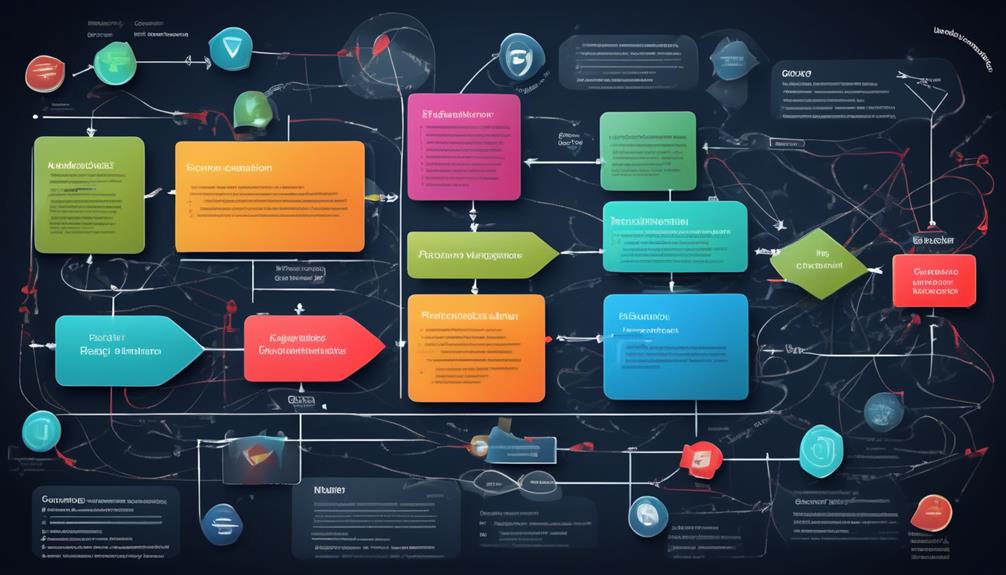
As we consider the subtopic of Risk Mitigation, our focus shifts to the identification of potential risks and the development of strategies to address them.
Mitigating risks involves proactive planning and the implementation of measures to reduce their impact on software testing and deployment.
Identifying Risks
Identifying risks in software QA involves systematically finding and listing potential sources of risks using various methods such as brainstorming, checklists, interviews, surveys, historical data, expert opinions, and assumptions.
When identifying risks, it's essential to create a comprehensive risk register, documenting key information such as risk name, description, category, cause, effect, probability, impact, and owner. This process enables us to prioritize and focus on the most critical risks.
By identifying risks early, we can proactively plan for risk mitigation and develop effective risk response plans. Moreover, it allows us to allocate resources efficiently and ensure that the most significant risks are managed appropriately.
- Comprehensive risk register creation
- Proactive risk mitigation planning
- Efficient resource allocation
Mitigating Strategies
We have identified various methods for identifying risks in software QA. Now, we'll discuss mitigating strategies to reduce their impact or likelihood.
Risk mitigation in software QA involves developing proactive strategies to address potential risks. These strategies can include avoiding high-risk features, transferring risk through insurance or contracts, accepting certain risks if their impact is minimal, and actively working to reduce the likelihood and impact of identified risks.
Effective risk mitigation planning is crucial for successful software testing and deployment. It's important to also focus on mitigating unanticipated unknown risks, which requires adaptability and a willingness to learn new technologies.
Long-term focus on risk management and mitigation is critical to project success in software QA, ensuring that potential issues are addressed before they escalate.
Risk Monitoring

Monitoring risks in software QA involves tracking and reviewing the status and performance of risks and their response plans. It's an essential aspect of risk management that ensures the effectiveness and efficiency of risk mitigation strategies.
Here are three key techniques for effective risk monitoring:
- Audits: Regular audits help in assessing the implementation and adherence to risk response plans, providing valuable insights into their effectiveness.
- Metrics and Indicators: Utilizing specific metrics and indicators enables QA teams to quantitatively measure the performance of risk management activities and identify areas for improvement.
- Feedback Mechanisms: Establishing feedback loops for stakeholders and team members facilitates the continuous evaluation and adjustment of risk response plans based on real-world experiences.
Effective risk monitoring is crucial for maintaining the integrity of software risks and ensuring that QA teams can proactively identify and address changes or new risks throughout the software development lifecycle.
Quantitative Risk Assessment
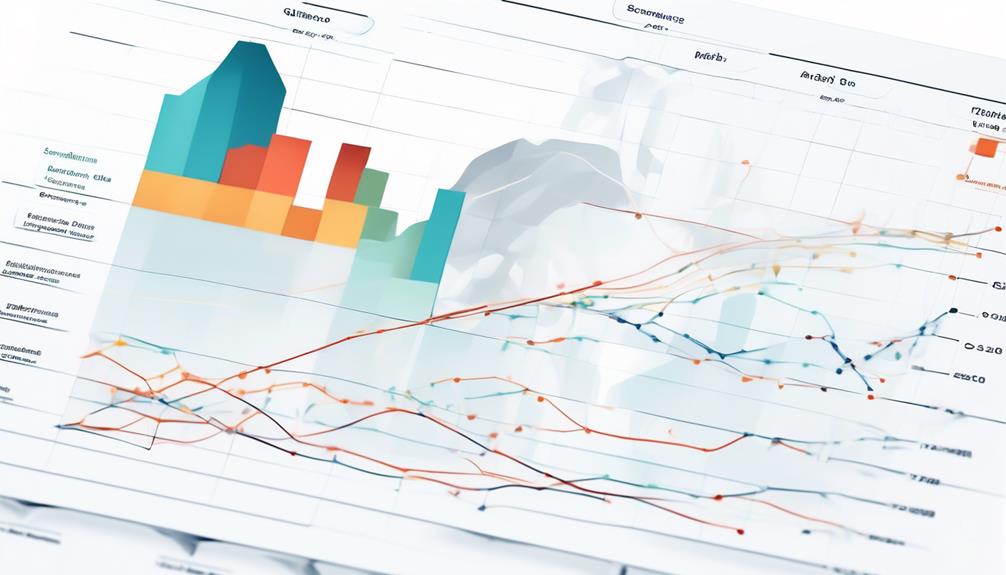
Let's start by exploring the concept of data-driven risk analysis.
This approach involves utilizing statistical methods to quantify the probability and impact of potential risks.
Data-Driven Risk Analysis
How can numerical data be leveraged to measure and prioritize risks in software QA through Data-Driven Risk Analysis?
Data-Driven Risk Analysis, a crucial aspect of risk-based testing in a software testing project, offers a structured and evidence-based approach to risk assessment. Here's what you need to know:
- Utilizes historical data, metrics, and probabilistic models for risk quantification.
- Provides a precise and objective understanding of risks through statistical analysis.
- Enables informed decision-making, resource allocation, and risk mitigation strategies based on potential impact.
Data-Driven Risk Analysis enhances the accuracy and reliability of risk management in software QA. By incorporating quantitative risk assessment methods, software QA teams can effectively prioritize and address risks, leading to improved overall project outcomes and product quality.
Risk Probability Assessment
Quantitative Risk Assessment, also known as Risk Probability Assessment, assigns numerical values to the likelihood of each identified risk occurring in software projects, aiding in prioritizing risks based on their potential impact and likelihood of occurrence. This method utilizes statistical data and historical information to measure the probability of risks and their potential impact on the software project.
By quantifying risks, it provides a more objective basis for decision-making and resource allocation in risk management. It helps in assigning a quantitative value to each risk, which is particularly useful for complex software systems where precise estimations of risk likelihood and impact are crucial for effective risk management.
In software testing, this approach enables more informed risk mitigation strategies, allowing teams to allocate resources and focus on addressing the most critical risks first.
Qualitative Risk Assessment

Qualitative risk assessment uses ordinal scales to rank risks based on probability and impact, allowing for the prioritization of risks in software QA based on subjective judgment and experience rather than numerical values. This method helps in identifying and understanding risks without the need for complex calculations or precise measurements. It provides a quick and effective way to assess and prioritize risks based on their potential impact.
Subjective judgment and experience play a significant role in this assessment method. It allows for a quick identification of potential risks without the need for complex calculations. Qualitative risk assessment prioritizes risks based on their potential impact and helps in determining their significance to the project.
Qualitative risk assessment is an essential aspect of risk assessment methods in software QA. Understanding how to effectively use ordinal scales and subjective judgment to prioritize risks based on their potential impact is crucial for ensuring the success of software development projects.
Risk Impact Analysis

Understanding the potential impact of identified risks is crucial for effective risk management in software QA, and this leads us to the subtopic of Risk Impact Analysis. Risk Impact Analysis evaluates the potential consequences of identified risks on a software project, aiding in assessing the severity and significance of risks on various aspects such as quality, schedule, and budget. The method aims to determine the level of impact a risk could have on the project and its stakeholders, facilitating informed decision-making and proactive risk management throughout the software development lifecycle. It also assists in prioritizing risks based on their potential impact and developing appropriate mitigation strategies. Below is a table illustrating the potential impact assessment criteria for risk impact analysis in software testing and QA projects.
| Impact Criteria | Description | Example |
|---|---|---|
| High | Severe impact on project success | Critical data loss |
| Medium | Moderate impact on project | Delay in feature delivery |
| Low | Minor impact on project | UI inconsistency |
| Very Low | Negligible impact | Minor documentation error |
| Critical | Endangers project success | Security breach |
This structured approach aids in effectively addressing potential risks in software QA projects.
Risk Probability Assessment

Estimating the likelihood of potential risks occurring is a critical aspect of risk analysis in software QA projects. In the realm of risk probability assessment, several key points warrant attention:
- Understanding Likelihood: Risk probability assessment involves comprehending the probability of occurrence for each identified risk. This necessitates a thorough exploration of potential scenarios and their likelihood.
- Quantitative and Qualitative Methods: The process integrates both qualitative and quantitative methods to evaluate the probability of risks materializing. This allows for a more comprehensive and accurate assessment.
- Insights for Decision-Making: By assigning a probability value to each risk, the assessment provides valuable insights into the likelihood of risks impacting the project. This aids in effective risk prioritization and supports informed decision-making.
In software QA projects, the probability of occurrence for various risks can significantly influence the project's trajectory. By employing robust risk probability assessment methods, teams can gain a clearer understanding of potential risks, enabling them to proactively address and mitigate these challenges.
Risk Severity Assessment
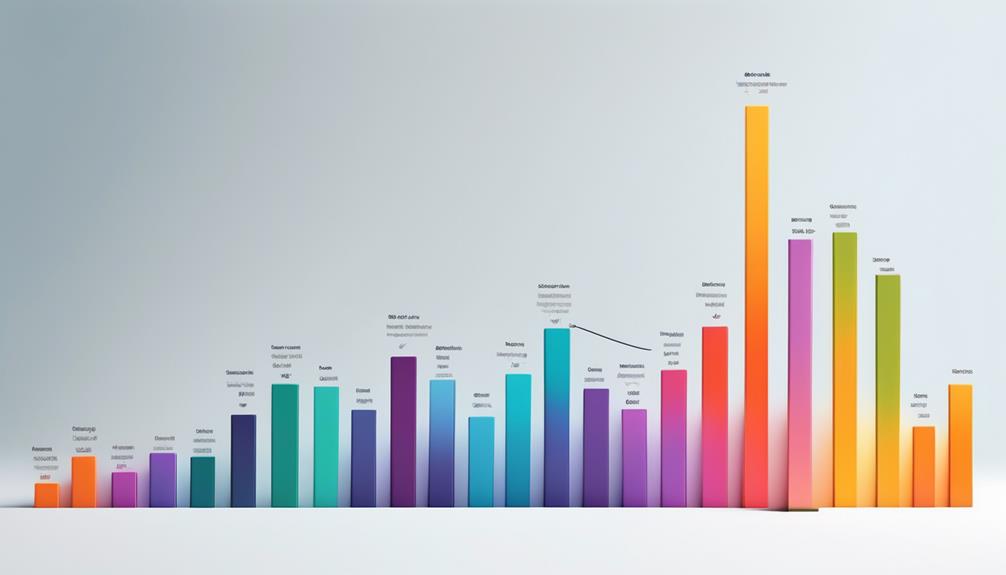
In our software QA projects, having comprehensively assessed the likelihood of potential risks, we now turn our attention to evaluating the severity of these identified risks through Risk Severity Assessment. This method plays a crucial role in prioritizing risks based on their potential impact on the software system. By quantifying the severity of risks, we can effectively allocate resources and develop appropriate mitigation strategies, particularly for high-severity risks, to prevent negative outcomes. The primary goal of Risk Severity Assessment is to ensure that the most critical risks are addressed to minimize their potential impact on the software system.
In software QA, Risk Severity Assessment is a vital component of the overall risk assessment process. It enables us to make informed decisions and focus on addressing the most severe risks first. By understanding the potential impact of each risk, we can prioritize our efforts and resources to effectively manage and mitigate these risks. Ultimately, this method enhances the overall resilience and robustness of the software system, contributing to the successful delivery of high-quality software products.
Risk Reporting
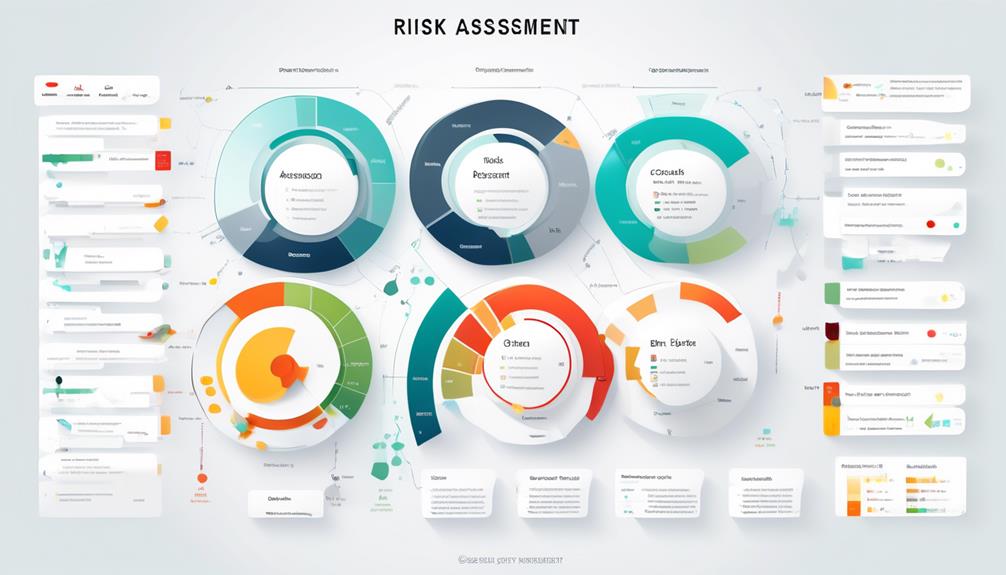
Assessing and communicating identified risks, their potential impact, and recommended mitigation strategies is essential in the process of Risk Reporting in software QA projects. Effective risk reporting is crucial for enabling informed decision-making and maintaining transparency and accountability in risk management processes.
Here are three key aspects of risk reporting in software QA:
- Comprehensive Overview: Risk reporting provides a comprehensive overview of the current risk landscape, ensuring that all stakeholders are aware of the risks and their potential impact on the project.
- Facilitating Informed Decision-Making: It facilitates informed decision-making by presenting the identified risks and recommended mitigation strategies, allowing project stakeholders to prioritize and allocate resources effectively.
- Tracking Risk Response Plans: Regular risk reporting helps in tracking the status and effectiveness of risk response plans, ensuring that the necessary actions are being taken to address the identified risks.
Effective risk reporting is integral to the success of software QA projects, as it enables stakeholders to proactively manage and mitigate potential risks, ultimately contributing to the overall quality and success of the software product.
Risk Communication

Effective risk reporting ensures that all stakeholders are aware of the identified risks and their potential impact, setting the stage for clear and concise risk communication in software QA projects.
Risk communication is the process of effectively conveying information about identified risks to stakeholders and team members. It involves clear and concise communication of risk details, potential impact, and mitigation strategies to ensure everyone understands and can take appropriate action.
This communication is essential for maintaining transparency and ensuring that everyone is aware of the current status of risks and their impact on the project. Furthermore, effective risk communication facilitates informed decision-making and supports collaboration among project teams and stakeholders. It helps in managing expectations, building trust, and ensuring that everyone is aligned on the potential risks and the planned responses.
Frequently Asked Questions
What Are the 6 Types of Risk Assessment Methodologies?
We use various risk assessment methodologies to identify potential risks and estimate their likelihood and severity. These methodologies include brainstorming, checklists, interviews, surveys, historical data, expert opinions, and assumptions.
After identifying the risks, we evaluate which ones require attention. This evaluation takes into consideration factors such as cost, benefit, feasibility, urgency, and stakeholder preferences.
To ensure that our response plans are effective, we have a monitoring process in place. This process allows us to optimize test scope, coverage, and reduce testing time and cost.
What Is the Best Method for Risk Assessment?
We believe the best method for risk assessment involves a combination of qualitative and quantitative approaches.
This allows for a comprehensive analysis of the likelihood and severity of each risk, while prioritizing them based on their potential consequences.
By evaluating risks based on cost, benefit, feasibility, and urgency, we can create effective response plans and ensure that risks are under control.
This approach helps in making informed decisions and addressing changes or new risks.
What Is Risk Assessment in Qa?
Risk assessment in QA involves identifying, analyzing, evaluating, and monitoring potential risks that could impact software quality. It helps prioritize risks, take necessary actions, and manage them effectively.
Techniques like risk workshops and qualitative analysis are used. The goal is to optimize test scope, reduce testing time and cost, and increase stakeholder satisfaction by managing expectations.
In essence, risk assessment in QA is about ensuring software reliability and quality.
How Do You Assess Risk in Software Testing?
We assess risk in software testing by:
- Identifying potential sources of risk
- Analyzing their likelihood and severity
- Evaluating which risks need attention
- Monitoring their status and response plans
This process helps:
- Prioritize risks
- Optimize test scope
- Improve software quality and reliability
The benefits include:
- Increased stakeholder confidence and satisfaction
- Ensuring risks are under control
- Effective response plans.
Conclusion
In software QA, the top risk assessment methods like risk identification, analysis, evaluation, and monitoring are vital for ensuring the quality and reliability of systems.
By employing these methods, we can mitigate potential pitfalls and make informed decisions.
With careful consideration and constant monitoring, we can confidently combat challenges and create a culture of caution and control.
Let's embrace these methods to master risk management in software QA.
Rick, our Software Quality Assurance Writer, is the creative force behind many of our insightful articles and course materials. His unique background in software development, fused with his natural flair for writing, allows him to convey complex QA concepts in a way that is both informative and captivating. Rick is committed to keeping abreast of the latest trends and advancements in software testing, ensuring that our content remains not just relevant, but at the forefront of the field. His significant contributions are instrumental in helping us fulfill our mission to deliver premier QA education.
Risk Control
4 Key Strategies for Quality Assurance Risk Management
Need to safeguard your products and processes? Discover the essential strategies for quality assurance risk management to ensure your success.

As the saying goes, ‘Prevention is better than cure.’ In the field of quality assurance and risk management, our team fully understands the importance of implementing proactive strategies to safeguard against possible risks.
These four key strategies have proven to be essential in ensuring the integrity and reliability of our products and processes.
From risk identification and assessment to the integration of emerging technologies, each strategy plays a crucial role in maintaining the highest standards of quality.
But what exactly are these strategies, and how can they be effectively implemented to mitigate risks?
Key Takeaways
- Actively identify and assess potential risks in order to prioritize them based on scientific knowledge and potential impacts on consumer health and safety.
- Implement measures to minimize the likelihood and severity of hazards and risks, continuously review and communicate risks, and monitor the effectiveness of risk control.
- Seamlessly integrate risk management considerations into each stage of the QA process, prioritizing risks based on probability and potential impact, and incorporating VUCA and PESTLE/SWOT analysis for a deeper understanding of risks.
- Communication and collaboration are essential for integrating risk management seamlessly into QA processes, ensuring data-driven insights from risk management tools, preemptively addressing potential risks, and maintaining the highest quality standards.
Risk Identification and Assessment
In our quality assurance risk management strategies, we actively identify and assess potential risks that could impact our quality management processes. This involves a systematic approach to evaluating and prioritizing risks based on scientific knowledge, with a keen focus on potential impacts on consumer health and safety.
The process includes defining the problem, identifying hazards, analyzing risks, and utilizing a risk matrix to evaluate them. To aid in this endeavor, we employ robust risk management tools such as FMEA, HACCP, and HAZOP, which enable us to anticipate and effectively control potential risks.
Integrating risk identification and assessment into our quality assurance processes is paramount for safeguarding against quality incidents and ensuring operational excellence. By leveraging data-driven approaches and advanced risk management tools, we can proactively mitigate potential risks, thereby fortifying our commitment to maintaining the highest standards of quality and consumer satisfaction.
Our strategic approach to risk identification and assessment forms the cornerstone of our comprehensive quality assurance and management framework, ensuring that our processes remain resilient and responsive to evolving challenges.
Risk Control and Mitigation

Utilizing advanced risk management tools such as FMEA, HACCP, and HAZOP, we proactively implement measures to minimize the likelihood and severity of hazards and risks in our quality assurance processes. This involves continuously reviewing and communicating risks, monitoring the effectiveness of risk control, and thoroughly documenting the entire process.
To effectively control and mitigate risks, we prioritize and balance control measures based on benefits, risks, and available resources. This ensures that our efforts are focused on areas that will have the greatest impact in reducing potential risks.
Additionally, we empower our employees through regular training and targeted risk management programs. By equipping them with the necessary knowledge and skills, they are better able to identify and address potential risks effectively.
In summary, our approach to risk management includes:
- Prioritize and balance control measures based on benefits, risks, and available resources.
- Continuously review and communicate risks, monitor the effectiveness of risk control, and document the process.
- Empower employees through regular training and targeted risk management programs.
- Utilize tools such as FMEA, HACCP, and HAZOP to anticipate and mitigate potential failures and hazards.
Integration With QA Processes
Employing advanced risk management tools in our quality assurance processes, we seamlessly integrate risk management considerations into each stage for proactive risk mitigation. By prioritizing risks based on probability and potential impact, we align our risk management strategies effectively with the QA processes. Incorporating VUCA and PESTLE/SWOT analysis provides a deeper understanding of the complex and dynamic nature of risks within our QA processes. We identify key stakeholders, internal and external contexts, and objectives susceptible to risk, ensuring a comprehensive approach to risk management. Our systematic approach for responding, monitoring, and reviewing risks within the QA processes allows us to adapt our risk management strategy for continuous improvement.
Communication and collaboration within the QA team are essential for integrating risk management seamlessly into our QA processes. Data-driven insights from risk management tools enable us to maintain quality standards throughout the software development lifecycle. This integration ensures that proactive risk management becomes a fundamental aspect of our QA process, enabling us to preemptively address potential risks and maintain the highest quality standards.
Emerging Technologies in Risk Management

Leveraging cutting-edge technologies, our approach to risk management incorporates advanced data analysis and real-time monitoring capabilities to proactively identify and control risks. The integration of emerging technologies into risk management practices offers significant potential to enhance the comprehensive risk, quality, and reliability aspects of our risk management plan.
Specifically, these technological advancements bring about the following potential consequences:
- Artificial Intelligence and Machine Learning: These technologies enable advanced data analysis, identifying patterns and anomalies that might indicate potential risks, thereby enhancing the quality of risk assessment.
- Blockchain Technology: Utilizing blockchain ensures secure and transparent risk data management, providing a reliable audit trail that strengthens the reliability of risk management processes.
- Robotic Process Automation (RPA): RPA streamlines repetitive risk management tasks, reducing errors and improving efficiency, which is crucial for maintaining the quality and reliability of risk management processes.
- Internet of Things (IoT) Integration: Real-time risk data from operational processes, obtained through IoT devices, supports proactive risk control measures, contributing to the overall quality and effectiveness of risk management efforts.
Frequently Asked Questions
What Are the 5 Risk Management Strategies?
We prioritize risk evaluation based on scientific knowledge, potential impact on consumer lives, and the strength of our risk management process.
We utilize a systematic, risk-based approach involving assessment, control, communication, and review to manage quality risks effectively.
Our five-step process involves forming a cross-functional team, conducting risk assessment, selecting risk control measures, implementing risk control, and continuously reviewing and communicating risks.
We integrate various approaches to quality risk management, covering areas from existing quality processes to a comprehensive risk register.
What Are Some Quality Assurance Strategies?
Some quality assurance strategies involve:
- Implementing robust processes
- Conducting thorough audits
- Ensuring strict adherence to standards
We prioritize:
- Continuous improvement
- Investing in cutting-edge technology
- Emphasizing proactive problem-solving
Our approach fosters a culture of excellence, where every team member is accountable for maintaining high standards.
By leveraging:
- Data-driven insights
- Customer feedback
We continually refine our strategies to deliver exceptional quality products and services.
What 3 Things Are Important for Quality and Risk Management?
Three important aspects for quality and risk management in the pharmaceutical industry are:
- Scientific knowledge: This forms the foundation for effective quality risk management. By leveraging scientific expertise, organizations can proactively identify potential risks and address them accordingly.
- Thorough risk assessment: Conducting comprehensive risk assessments is crucial in identifying and analyzing potential risks. This involves evaluating the likelihood of occurrence and the potential impact on consumer safety.
- Prioritization based on potential impact to consumer safety: Once risks have been identified and assessed, it is important to prioritize them based on their potential impact to consumer safety. This ensures that resources are allocated effectively to address the most significant risks.
These three elements work together to ensure the highest standards of product quality and safety in the pharmaceutical industry. Organizations that incorporate scientific knowledge, conduct thorough risk assessments, and prioritize consumer safety are better equipped to proactively manage risks and ensure the quality of their products.
What Is Risk Management in Qa?
Risk management in QA involves:
- Identifying, assessing, controlling, communicating, and reviewing quality risks.
- It's critical for ensuring product quality, especially in industries like pharmaceuticals where consumer health and safety are at stake.
The process includes:
- Forming a cross-functional team.
- Conducting risk assessment.
- Selecting and implementing control measures.
- Continuous review and communication of risks.
Tools like FMEA, HACCP, and HAZOP are used to:
- Anticipate failures.
- Identify critical control points.
- Detect flaws in manufacturing systems.
Conclusion
In conclusion, by implementing these 4 key strategies for quality assurance risk management, we can proactively identify and address potential risks in the supply chain, manufacturing processes, and regulatory compliance.
This approach allows us to stay ahead of any potential issues and ensure the quality and safety of our products.
By integrating risk management with our QA processes and leveraging emerging technologies, we can continue to improve and evolve our risk management practices for the future.
Rick, our Software Quality Assurance Writer, is the creative force behind many of our insightful articles and course materials. His unique background in software development, fused with his natural flair for writing, allows him to convey complex QA concepts in a way that is both informative and captivating. Rick is committed to keeping abreast of the latest trends and advancements in software testing, ensuring that our content remains not just relevant, but at the forefront of the field. His significant contributions are instrumental in helping us fulfill our mission to deliver premier QA education.
Risk Control
Top 10 Strategies for Quality Assurance Risk Management
Keen to enhance your organization's risk management approach? Discover the top 10 strategies for quality assurance and their impact on operational performance.
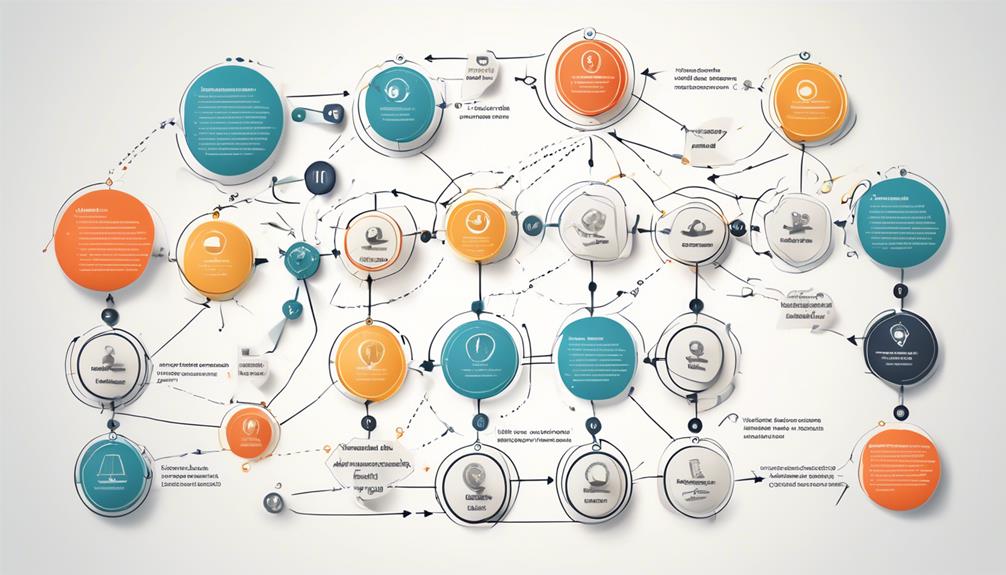
As specialists, we understand the challenges involved in implementing comprehensive quality assurance and risk management strategies within an organization.
While it may seem daunting to address potential risks, our top 10 strategies are designed to provide practical and effective solutions to mitigate and manage these challenges.
By incorporating these strategies into your quality management approach, you can enhance operational effectiveness, protect assets, and achieve business goals.
But, how exactly do these strategies work in real-world scenarios, and what kind of impact can they have on an organization's overall performance?
Stay tuned to discover the answers and gain valuable insights into implementing these strategies successfully.
Key Takeaways
- Defining clear quality objectives and establishing robust quality processes are essential for maintaining consistency, compliance, and performance excellence.
- Thoroughly documenting and standardizing workflows helps identify potential areas of risk and allows for proactive measures to mitigate those risks.
- Implementing a documented quality management system promotes consistent adherence to rules, reduces errors and inconsistencies, and ensures easy access to information, procedures, and policies.
- Regularly monitoring risk implementation, conducting audits and assessments, and fostering supplier collaboration are crucial for identifying gaps, minimizing risks, and driving continuous improvement in quality assurance practices.
Define Clear Quality Objectives
We establish clear quality objectives to guide our organization in maintaining consistency, compliance, and performance excellence. By defining these objectives, we ensure that our operations align with regulatory guidelines, mitigating the risk of financial or reputational loss. Through the use of quality management software, we can proactively track our progress and identify areas for quality improvement, allowing us to take a proactive approach to risk management.
Clear quality objectives not only provide direction and consistency but also facilitate communication and cooperation across the organization. They play a crucial role in preventing noncompliance with industry regulations, reducing errors and inconsistencies, and creating a culture of excellence. With well-defined quality goals, everyone in the organization follows the same rules, ultimately contributing to our risk management strategies.
Establish Robust Quality Processes
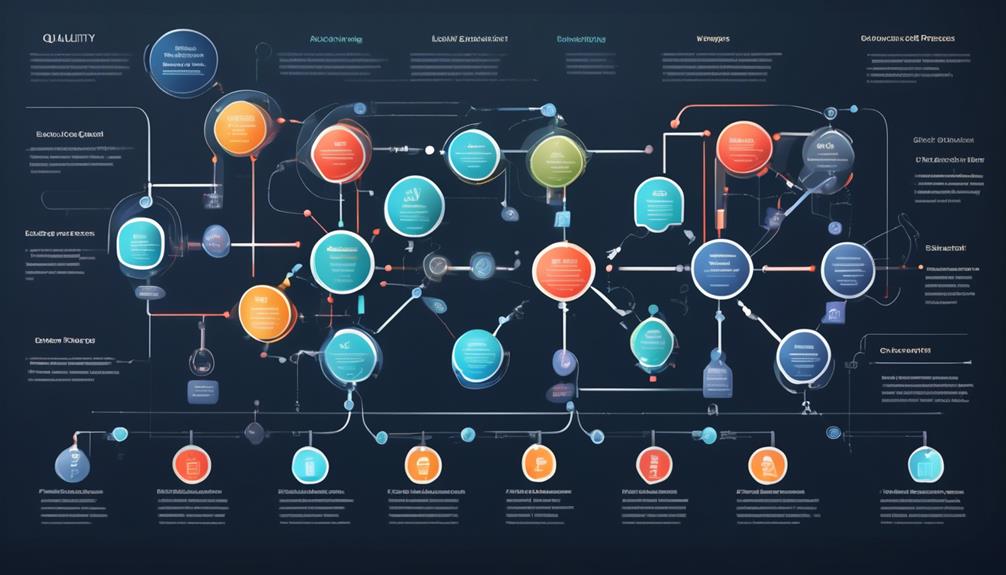
When establishing robust quality processes, it's crucial to:
- Document each step of the workflow to ensure consistency and standardization.
- Foster a culture of continuous improvement by evaluating and refining processes.
- Implement these processes to create a framework that promotes accountability and excellence.
- Align with regulatory guidelines and minimize the risk of financial or reputational loss.
Process Documentation Importance
To establish robust quality processes, it's crucial to thoroughly document and standardize workflows, define clear roles and responsibilities, and continuously evaluate and refine procedures.
Process documentation is integral to risk management and quality assurance. It allows us to identify potential areas of risk in the production of products, enabling us to implement proactive measures to mitigate these risks.
Through detailed documentation, we can ensure that quality standards are consistently met, reducing the likelihood of defects in the final products.
Furthermore, process documentation facilitates the identification of areas for improvement, allowing for the continual enhancement of operational procedures.
Continuous Improvement Culture
Implementing a culture of continuous improvement within an organization necessitates the establishment of robust quality processes to ensure standardized workflows, accountability, and adherence to industry regulations and standards. A documented quality management system is crucial for everyone to follow the same rules and create a culture of excellence. This involves clear quality objectives, defined standards, and procedures. Training and empowering employees to contribute to quality assurance efforts and fostering a shared commitment for organizational success is essential. Additionally, utilizing data-driven decision making is crucial to identify opportunities for improvement and positively impact customer satisfaction. This approach allows for managing risk effectively and embedding a continuous improvement culture within the organization.
| Continuous Improvement Culture | Quality Management System | Risk Management Process |
|---|---|---|
| Standardized workflows | Defined standards | Identify opportunities |
| Accountability | Documented procedures | Data-driven decision |
| Adherence to regulations | Culture of excellence | Effective quality |
Implement Documented Quality Management System
The implementation of a documented quality management system ensures easy access to information, procedures, and policies, promoting consistent adherence to rules and reducing errors and inconsistencies.
By effectively managing risk, quality management becomes an integral part of an organization's operations, ensuring that risk assessment and control measures are embedded within management processes.
This systematic approach not only helps in meeting industry standards and regulatory requirements but also promotes a culture of excellence within the organization.
The documented quality management system allows for the tracking of performance, aligns with regulatory guidelines, and reduces the risk of non-compliance, thereby preventing potential financial or reputational loss.
It fosters a culture of quality and accountability, underpinning the organization's commitment to continuous improvement and operational efficiency.
Ultimately, the implementation of a documented quality management system is pivotal in mitigating risks, enhancing overall quality, and ensuring sustained adherence to regulatory standards and industry best practices.
Train and Empower Employees

Investing in comprehensive employee training programs equips our workforce with the tools necessary to consistently produce top-quality work. By providing training programs, we empower employees to take ownership of their roles in quality assurance.
It's essential to educate all employees about quality goals, fostering a shared commitment for organizational success and customer satisfaction. This not only enhances their skills and knowledge but also establishes a system where every individual contributes to quality assurance efforts.
Continuous learning and development opportunities are crucial to ensure that our employees are well-equipped to meet the evolving demands of quality assurance. Moreover, cultivating a culture of empowerment not only drives quality improvement but also encourages innovation at all levels of the organization.
Implement Risk Management Strategies

We need to start by identifying potential risks that could impact product quality.
Once these risks are identified, we must develop detailed mitigation plans to address them proactively.
As we implement these risk management strategies, it's crucial to monitor their effectiveness and make adjustments as necessary to ensure we're minimizing risks and demonstrating our commitment to customers.
Identify Potential Risks
To effectively implement risk management strategies, it's imperative to conduct a comprehensive assessment to identify potential risks to product quality. This involves the following steps:
- Conducting a thorough risk analysis to identify all potential risks that could impact product quality. This includes examining each stage of the production process and identifying points of vulnerability.
- Utilizing a risk matrix to assess risks based on their likelihood and potential impact on product quality. This helps prioritize and focus on the most critical risks that need immediate attention.
Develop Mitigation Plans
After identifying potential risks to product quality, the next step is to develop mitigation plans to implement effective risk management strategies. Mitigation plans are essential for minimizing operational and quality risks. By proactively anticipating and preventing problems, an organization can demonstrate its commitment to customers and foster sustainable growth. The best practices for developing mitigation plans include implementing process controls, conducting regular training programs, and ensuring proper equipment maintenance. These measures help minimize risks and enhance the overall quality assurance process. It's crucial to regularly monitor and review risk management strategies to ensure their effectiveness. The table below outlines key components of effective mitigation plans:
| Mitigation Plans | Description | Benefits |
|---|---|---|
| Proactive Problem Prevention | Anticipate and prevent potential issues | Minimize operational and quality risks |
| Process Controls and Training Programs | Implement measures to maintain quality standards | Ensure consistent product quality and customer satisfaction |
| Regular Equipment Maintenance | Scheduled maintenance and inspections | Prevent equipment failures and production delays |
Monitor Risk Implementation
Monitoring the implementation of risk management strategies is crucial for ensuring the effectiveness of quality assurance measures and minimizing operational and product quality risks. To achieve this, we must:
- Regularly monitor and review risk management strategies to identify any gaps or inefficiencies.
- This helps in proactively anticipating and preventing potential problems and minimizing risks through process controls, training programs, and equipment maintenance.
It demonstrates a commitment to customers and fosters sustainable growth, driving continuous risk reduction and improvement in your organization's quality.
Conduct Regular Audits and Assessments

Regular audits and assessments are essential components of an effective quality assurance risk management strategy, providing a thorough evaluation of the organization's quality assurance practices. By systematically reviewing processes and procedures, we can identify potential risks, non-conformities, and areas for improvement within our approach to quality management. These evaluations help us to proactively manage risks, ensuring that we're consistently meeting and exceeding quality standards while also mitigating potential liabilities.
Conducting regular audits and assessments is integral to our risk management efforts as it allows us to stay ahead of potential issues, rather than reacting to them after they've already impacted our operations. This proactive approach to risk management not only safeguards our products and services but also bolsters our reputation and customer satisfaction.
Moreover, these evaluations drive continuous improvement by fostering a culture of accountability and transparency within our organization. They serve as a tool for enhancing organizational excellence, demonstrating our commitment to delivering high-quality products and services.
In essence, regular audits and assessments are pivotal in maintaining and improving the quality standards that define our organization's success.
Foster Supplier Collaboration

To ensure high-quality standards from our suppliers, we communicate our expectations clearly and maintain active collaboration throughout the supply chain. This collaborative approach involves implementing management practices to improve customer satisfaction and ensure regulatory compliance.
Here's how we foster supplier collaboration:
- Transparent Communication: We prioritize open and transparent communication with our suppliers, ensuring that all expectations and requirements are clearly understood and met. This facilitates a shared understanding of quality standards and regulatory compliance throughout the supply chain.
- Early Involvement in Design and Development: By involving suppliers early in the design and development stages, we leverage their expertise to create products that meet quality standards from the outset. This proactive approach not only improves the final product but also enhances the overall quality control within the supply chain.
Fostering supplier collaboration is essential for maintaining high-quality standards, meeting regulatory compliance, and ultimately improving customer satisfaction. This collaborative effort strengthens the supply chain and ensures that all parties are aligned in delivering products that meet the highest quality standards.
Utilize Data-Driven Decision Making

We can enhance our quality assurance risk management strategies by utilizing data-driven decision making.
By leveraging data analysis tools, we can gain valuable insights into quality performance and identify improvement opportunities.
Statistical decision making and the use of quality control metrics will enable us to make informed decisions to improve product quality and operational efficiency.
Data Analysis Tools
Utilizing data analysis tools allows us to gain real-time visibility into quality performance. This enables us to collect, organize, and analyze quality-related information to make data-driven decisions.
By utilizing these tools, we can effectively identify opportunities for improvement. We can then take corrective actions based on data analysis to enhance quality performance.
Additionally, through data-driven decision making, we gain valuable insights into quality assurance practices. This leads to better decisions that positively affect customer satisfaction.
Data analysis tools also play a crucial role in ensuring compliance with regulatory requirements. They help us leverage management tools for continuous improvement.
Ultimately, the use of data analysis tools is integral to effective quality assurance and risk management. It allows for proactive decision-making and the maintenance of high-quality standards.
Statistical Decision Making
Regularly utilizing data-driven decision making informs our quality assurance strategies and actions. Statistical decision making plays a crucial role in quality assurance risk management. By collecting, organizing, and analyzing quality-related data, we can identify potential risks and areas for improvement.
Statistical techniques such as regression analysis, hypothesis testing, and control charts enable us to gain valuable insights into quality performance. These insights help us make informed decisions that have a positive impact on customer satisfaction and overall quality.
Embracing statistical decision making allows us to drive continuous improvement in our quality assurance practices. By leveraging quality management software, we can ensure real-time visibility into quality performance, enabling proactive risk management.
Ultimately, statistical decision making empowers us to mitigate risks, enhance quality, and optimize our quality assurance strategies.
Quality Control Metrics
Analyzing quality control metrics through data-driven decision making allows us to:
- Gain insights into potential risks and improvement areas identified through statistical decision making in quality assurance risk management.
- Utilize quality management software to gain real-time visibility into quality performance.
- Collect, organize, and analyze quality-related information to identify improvement opportunities.
- Make better decisions that positively affect customer satisfaction.
- Take corrective actions to continuously improve product quality.
Data-driven decision making also helps us ensure:
- Quality assurance practices are effective and efficient.
- Enhanced overall risk management.
With this approach, we can:
- Proactively identify and address potential quality issues.
- Achieve higher levels of customer satisfaction and trust.
Encourage Continuous Improvement

To foster a culture of continuous improvement, we establish a systematic approach for collecting and evaluating improvement ideas within our organization. This management is a systematic process that helps identify and address potential quality issues before they escalate into larger problems.
By encouraging continuous improvement, we create an environment where employees feel empowered to suggest and implement changes that improve the quality of our products and services. This approach instills a sense of ownership and commitment to excellence, as employees become actively engaged in the process of enhancing our organization's performance.
Embracing innovation as a way of life, we not only succeed in an ever-changing market but also stay ahead of the competition. Our commitment to continuous improvement is integral to our quality assurance risk management strategy, ensuring that we're constantly evolving to meet the demands of our customers and the market.
Embrace Customer Feedback

Embracing customer feedback is crucial for our organization's quality assurance risk management strategy, as it provides valuable insights into improving our products and services. By creating channels for customer feedback and utilizing feedback analysis tools, we can identify potential areas for improvement and address common issues to ensure high-quality products and services.
Additionally, gaining insights into customer preferences and expectations allows us to align with their needs, fostering a customer-centric approach.
- Create channels for customer feedback to ensure their opinions are heard and valued.
- This can be achieved through various means such as surveys, feedback forms on our website, or dedicated customer feedback hotlines.
- Utilize feedback analysis tools to understand common issues and improve products or services accordingly.
- By leveraging technology, we can efficiently analyze large volumes of feedback data to identify recurring themes or areas of concern.
Frequently Asked Questions
What Are 5 Risk Management Strategies?
We identify and mitigate product quality risks through proactive risk management strategies. Our approach involves analyzing potential risks, creating preventive measures, and demonstrating our commitment to customers.
What Are Some Quality Assurance Strategies?
We focus on quality assurance strategies to ensure product excellence.
Our team defines clear objectives and standards, establishing robust processes and procedures for operational efficiency.
We implement a documented management system and invest in comprehensive training programs to empower employees.
Additionally, we proactively identify and mitigate product quality risks through risk management strategies.
This commitment to quality not only minimizes risks but also demonstrates our dedication to meeting customer expectations.
What Is Risk Management in Quality Assurance?
Risk management in quality assurance involves several key steps. The first step is identifying risks that could impact product quality and compliance. This involves carefully analyzing the processes and systems in place to identify any potential vulnerabilities or weaknesses.
Once risks have been identified, the next step is to assess them. This involves determining the likelihood and potential impact of each risk. By assessing risks, organizations can prioritize their efforts and resources to address the most significant risks first.
After assessing risks, the next step is managing them. This involves implementing measures and controls to mitigate the risks and prevent them from occurring. This could include implementing process controls, such as standard operating procedures or quality control checks, to minimize the likelihood of errors or defects.
Finally, risk management involves monitoring risks on an ongoing basis. This includes regularly reviewing strategies and processes to ensure they remain effective and identifying any new risks that may arise. By monitoring risks, organizations can quickly identify and address any issues before they impact product quality or compliance.
Effective risk management in quality assurance is crucial for protecting the organization and its assets. It helps to ensure business continuity by proactively preventing problems and minimizing risks. Additionally, effective risk management prioritizes resources efficiently, ensuring that efforts are focused on addressing the most significant risks.
Furthermore, risk management in quality assurance has a direct impact on customer satisfaction. By proactively identifying and addressing risks, organizations can build trust with their customers and demonstrate their commitment to delivering high-quality products.
In industries like pharmaceuticals, effective risk management is particularly critical. Product quality directly impacts consumer health and safety, so organizations must have robust processes in place to ensure that risks are effectively managed and minimized.
What Is the Risk-Based Approach to Quality Assurance?
We approach quality assurance with a risk-based mindset, proactively identifying and mitigating product quality risks to prevent problems and minimize potential losses.
Emphasizing continuous evaluation and refinement, we implement a documented quality management system to reduce errors, ensure compliance, and drive operational efficiency.
Utilizing data-driven decision-making and regular audits, we identify opportunities for improvement and drive continuous quality assurance enhancement, ultimately positively affecting customer satisfaction.
Conclusion
In conclusion, by implementing these top 10 strategies for quality assurance risk management, organizations can build a solid foundation for success.
Like a well-oiled machine, these strategies ensure that every part of the business is working together smoothly and efficiently, minimizing potential risks and maximizing quality.
With these strategies in place, organizations can navigate the unpredictable waters of business with confidence, knowing that they're prepared to handle any challenges that come their way.
Rick, our Software Quality Assurance Writer, is the creative force behind many of our insightful articles and course materials. His unique background in software development, fused with his natural flair for writing, allows him to convey complex QA concepts in a way that is both informative and captivating. Rick is committed to keeping abreast of the latest trends and advancements in software testing, ensuring that our content remains not just relevant, but at the forefront of the field. His significant contributions are instrumental in helping us fulfill our mission to deliver premier QA education.
Risk Control
10 Best Strategies for QA Risk Mitigation
Need to ensure your QA process runs smoothly and risks are minimized? Dive into the 10 best strategies for QA risk mitigation.

So, you’re confident that you’ve got your QA under control? Think again. It’s widely understood that, despite our best efforts at planning, there’s always a chance that unexpected problems will crop up.
That's where the 10 best strategies for QA risk mitigation come in. These strategies are essential for ensuring that your QA process runs smoothly and that potential risks are minimized.
But what are these strategies, and how can they be implemented effectively? Well, you're about to find out.
Key Takeaways
- Define risk criteria and prioritize risks based on impact and likelihood to effectively allocate resources and focus on high-priority risks.
- Conduct comprehensive risk assessment and analysis, considering both technical and human factors contributing to risks, to identify risk sources and potential outcomes on performance, quality, and value.
- Formulate plans to reduce, transfer, avoid, or accept risks based on criticalness of the system, regulatory requirements, customer impact, and business objectives.
- Continuously monitor and review risk mitigation strategies, regularly report and analyze QA metrics, and communicate identified risks and potential impacts to ensure ongoing effectiveness of risk mitigation efforts.
Define Risk Criteria
In defining risk criteria for QA activities, we consider various factors such as probability, severity, urgency, and tolerance to create a comprehensive framework for evaluating potential risks. This detailed approach allows us to prioritize risks based on their potential impact and likelihood of occurrence.
By incorporating historical data and expert opinions to determine the probability of identified risks, we can establish a solid foundation for effective risk identification.
Defining risk criteria not only aids in prioritizing risks but also plays a crucial role in developing a robust risk management strategy. It enables us to focus on risks that require immediate attention and action, ensuring that our quality assurance processes are proactive and adaptive to potential challenges.
Additionally, the establishment of key risk indicators (KRIs) as part of our risk criteria provides a structured approach to monitoring and addressing risks. This proactive stance allows us to anticipate potential issues and implement appropriate risk mitigation strategies, thus enhancing the overall quality assurance framework.
Identify Risk Sources

As we move forward in our discussion of QA risk mitigation strategies, it's crucial to focus on identifying risk sources.
By conducting a comprehensive risk assessment and analysis, we can pinpoint potential areas of concern that may impact the software development and testing process.
Recognizing both internal and external risk sources, such as ambiguous requirements, outdated tools, and regulatory constraints, is essential for proactively addressing and mitigating potential issues.
Risk Assessment
Understanding the potential sources of risk within the software development and testing process is crucial for proactive risk assessment and mitigation.
When assessing risks, we consider both internal and external factors that may impact the project's success. This involves recognizing technical and human factors that can contribute to the emergence of risks.
It's important to be aware of how risks can impact different stages of the development lifecycle. Examples of potential risk sources include ambiguous requirements, outdated tools, insufficient resources, unforeseen scenarios, and regulatory constraints.
Risk Analysis
Recognizing the potential sources of risk within the software development and testing process, we systematically analyze and document the causes or origins of risks as part of our proactive risk analysis strategy.
Our QA team identifies potential risks stemming from internal, external, technical, and human factors. This includes ambiguous requirements, outdated tools, insufficient resources, and unforeseen scenarios.
By considering the impact and potential outcomes of these risks on performance, quality, and value, we aim to develop proactive and reactive strategies for mitigation. Our approach involves utilizing historical data, expert opinions, and diverse perspectives to create a comprehensive understanding of risk sources and potential mitigation strategies.
This detailed risk analysis enables us to formulate effective plans to reduce, transfer, avoid, or accept the risks, ensuring the robustness of our software testing processes.
Assess Risk Impacts
To effectively assess risk impacts, we evaluate the potential positive or negative effects on performance, quality, and value. When considering risk impacts, it's crucial to delve into the specifics to determine the likelihood and potential consequences.
Here are the key components of assessing risk impacts:
- Likelihood and Severity:
We analyze the likelihood of a risk occurring and the severity of its potential impact. This involves a detailed examination of the probability of occurrence and the magnitude of the consequences.
- Potential Impacts:
We consider a broad range of potential impacts, including reduced customer satisfaction, increased costs, and damaged reputation. Understanding these potential outcomes allows for a more comprehensive assessment of the risks at hand.
Select Risk Responses
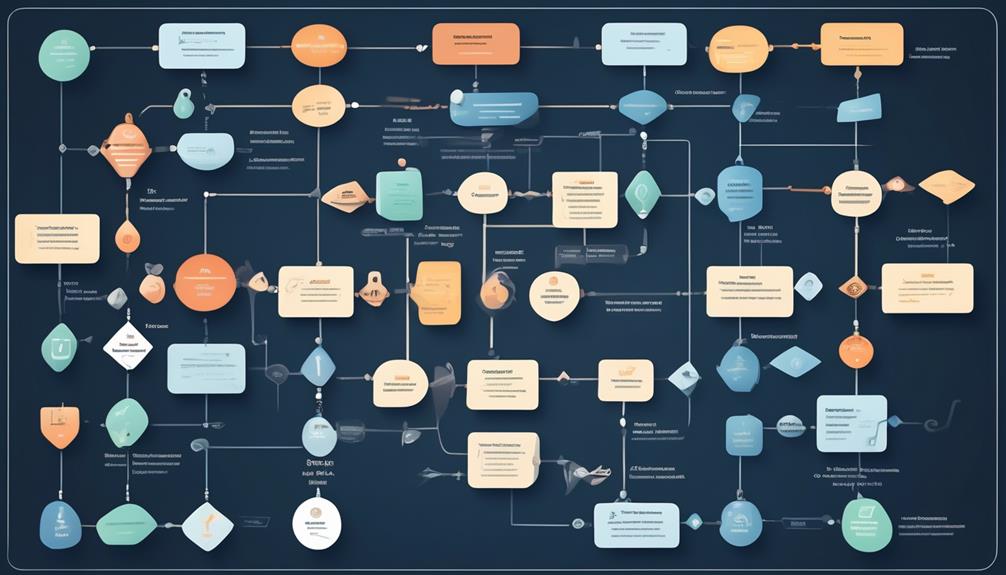
In prioritizing risk responses, we consider factors such as criticalness of the system, regulatory requirements, customer impact, and business objectives to ensure effective mitigation strategies. When selecting risk responses, it is crucial to analyze the potential impacts and identify the most appropriate actions to address them. Below is a table illustrating some key risk response strategies for QA risk mitigation:
| Risk Response Strategy | Description | Examples |
|---|---|---|
| Avoidance | Taking steps to eliminate the risk altogether | Using more reliable software or testing tools |
| Reduction | Implementing measures to lessen the probability or impact of the risk | Utilizing management tools to streamline processes |
| Transference | Shifting the risk to a third party, such as through outsourcing | Employing external QA expertise |
| Acceptance | Acknowledging the risk and its potential impact | Having contingency plans in place for potential software failures |
Selecting the most suitable risk response strategy is essential for successful risk mitigation. It involves leveraging software and testing tools, management tools, and QA expertise, while considering existing resources and successful approaches used by the company or competitors. By replicating successful strategies and matching them to specific types of risks, organizations can effectively manage and minimize potential threats.
Prioritize Risks

As we move forward in our discussion of QA risk mitigation strategies, it's crucial to prioritize risks based on their potential impact and likelihood of occurrence.
By following a systematic risk assessment process, we can identify and analyze the impact of each risk, employing impact analysis techniques to determine the most critical ones.
This prioritization will enable us to allocate resources effectively and select the most appropriate mitigation strategies to address the high-priority risks.
Risk Assessment Process
Prioritizing risks involves meticulously assessing their potential impact and likelihood of occurrence, allowing organizations to focus resources on addressing the most critical threats to the project or business.
To achieve this, organizations typically employ the risk assessment process, which involves the following steps:
- Identify Potential Risks
- This involves systematically identifying and documenting potential risks that could impact the project or business.
- Common Risk Mitigation Strategies
- Organizations often utilize common risk mitigation strategies such as risk avoidance, risk transfer, risk reduction, and risk acceptance to mitigate the impact of identified risks.
Impact Analysis Techniques
Utilizing impact analysis techniques allows us to effectively prioritize risks based on their potential impact on project objectives and outcomes, ensuring a proactive and detail-oriented approach to risk management.
By considering the potential impact of risks on project scope, schedule, budget, and software quality, we can strategically allocate resources and focus on mitigating the risks that could have the most significant impact on project outcomes.
This analytical approach enables us to assess the potential consequences of each risk on project success and prioritize them based on the severity of those consequences.
Through impact analysis techniques, we can enhance our risk mitigation strategies, ensuring that testing services and management processes are geared towards addressing the risks that pose the highest threat to the successful delivery of the project.
Mitigation Strategy Selection
By analyzing the potential impact of risks on project objectives and outcomes, we can strategically prioritize risks for mitigation strategies, ensuring a proactive and detail-oriented approach to risk management.
When prioritizing risks, our team focuses on criteria such as severity, urgency, probability, and tolerance to rank risks and determine which ones require immediate attention. Additionally, we consider historical data and seek expert advice to assess the probability of risks and inform the prioritization process.
We specifically target risks that could significantly influence performance, quality, value, customer satisfaction, cost, productivity, reputation, or standards compliance. This approach allows us to allocate resources and attention to the most critical areas of concern, thereby enhancing our organization's ability to mitigate various types of risk effectively.
Develop Mitigation Strategies

To effectively develop mitigation strategies, we assess and prioritize risks based on their likelihood, impact, and urgency while identifying internal and external risk sources.
This involves utilizing tools and techniques to thoroughly understand the identified risks.
It's crucial to involve team members with diverse expertise to gain comprehensive insights and develop effective risk mitigation strategies.
Implementing strategies requires a proactive approach, where we not only focus on reducing or transferring risks but also on being prepared with reactive response plans in case risks materialize.
By considering diverse perspectives and encouraging collaboration, we can ensure that our mitigation strategies are robust and cover all potential scenarios.
Continuous monitoring, reviewing, and updating of these strategies are essential to adapt to changing circumstances and ensure their effectiveness in mitigating risks.
This proactive and detail-oriented approach allows us to be fully prepared to mitigate these risks and ensures that our projects are set up for success.
Implement Mitigation Measures

As we move forward with our risk mitigation strategies, it's crucial to implement the measures we've outlined in our mitigation plan overview.
This involves putting into action the specific risk assessment strategies we've developed to address potential issues.
Mitigation Plan Overview
We will clearly communicate responsibilities to the QA team and stakeholders for effective implementation of mitigation measures.
To ensure a comprehensive mitigation plan overview, we'll take actions to reduce various types of risks through the risk management process. This involves monitoring the progress and addressing any deviations or issues, as well as regularly reviewing and updating the mitigation strategies.
Additionally, we'll document identified risks, assessments, mitigation strategies, and implementation status in a central repository.
Furthermore, we'll analyze past projects for lessons learned, develop new risk management solutions, and continuously improve the organization's ability to absorb risks.
This proactive approach will enable us to effectively manage potential challenges and enhance our QA processes.
Risk Assessment Strategies
Implementing effective risk assessment strategies requires proactive identification and mitigation of potential threats to the QA process. By utilizing comprehensive risk assessment strategies, we can identify possible risks and reduce the probability of their occurrence. This proactive approach allows us to anticipate and address potential challenges, ultimately leading to more robust risk mitigation.
Incorporating risk assessment strategies into project management ensures that we're equipped to handle any unforeseen issues that may arise during the QA process. Through meticulous analysis and risk evaluation, we can develop a proactive plan to minimize the impact of potential risks. This detail-oriented approach empowers us to take preemptive measures, enhancing the overall effectiveness of our risk mitigation efforts.
Monitor and Review
To ensure effective risk mitigation, it's essential to continuously monitor and review our strategies for any emerging threats or changes in the risk landscape. By regularly assessing our risk mitigation efforts, we can proactively identify and address any potential performance risks. This allows us to stay ahead of any issues that may arise, ensuring the quality and efficiency of our processes.
- Regular Reporting
Implementing a system for regular reporting and analysis of QA metrics to identify any deviations from expected performance standards.
Utilizing key performance indicators to track the effectiveness of risk mitigation strategies and promptly address any shortcomings.
- Insufficient Resources
Conducting ongoing evaluations of resource allocation to ensure that we've adequate resources for effective risk mitigation.
Continuously monitoring resource utilization to identify any areas where additional resources may be required to mitigate potential risks.
Document and Communicate

Continuously monitoring and reviewing our risk mitigation strategies has laid the groundwork for our next vital step: documenting and communicating identified risks and their potential impacts to ensure alignment and transparency among stakeholders.
In the realm of QA, it's crucial to document all risks related to testing processes, including security risks and potential impact assessment. This documentation should be comprehensive and include the likelihood of occurrence and potential severity of each risk. By establishing a risk register with detailed descriptions of each risk, as well as potential impacts and mitigation strategies, we maintain transparency and clarity.
Regular communication of risk-related information and updates to stakeholders is essential to ensure everyone is informed and aligned on the risk mitigation plan and its implementation status. Utilizing a central repository for documenting identified risks, assessments, and mitigation strategies ensures easy accessibility and reference.
Furthermore, we must foster collaboration and encourage diverse perspectives by providing a platform for sharing additional examples, stories, or insights related to risk mitigation strategies. This proactive approach to documentation and communication ensures that all stakeholders are well-informed and engaged in the assurance (QA) process.
Learn and Improve

Regularly engaging with stakeholders and team members to gather insights on potential risks and prioritize them based on criticalness and impact, we proactively seek to improve our risk mitigation strategies. Through this collaborative approach, we continuously learn and improve by:
- Reviewing and updating risk mitigation strategies: We analyze past projects for mistakes and lessons learned, developing new risk management solutions to continuously improve our risk management processes.
- This involves measuring the likelihood of potential risks and identifying potential areas for improvement in our QA practices.
- Communicating responsibilities and ensuring effective implementation: We communicate responsibilities to team members and stakeholders and ensure the effective implementation of mitigation measures, proactively addressing any deviations or issues that may arise.
- This ensures that all stakeholders are aware of their roles in the risk mitigation process and are equipped to take appropriate actions.
Frequently Asked Questions
What Are the Four 4 Risk Mitigation Strategies?
We've identified four key risk mitigation strategies:
- Assuming and accepting risk
- Avoiding risk
- Controlling risk
- Transferring risk
Each strategy addresses different aspects of risk, such as cost, schedule, and performance. By collaboratively identifying risks and their consequences, planning to avoid them, reducing their impacts, or transferring them to other parties, we can effectively manage and mitigate potential negative outcomes.
These proactive measures help ensure the success of our projects and minimize potential setbacks.
How Do You Mitigate Risk in Qa?
To mitigate risk in QA, we prioritize defining risk criteria, identifying sources, and assessing impacts.
We employ proactive and reactive responses, such as preventive measures and shifting responsibility.
By considering probability, severity, urgency, and tolerance, we effectively evaluate and prioritize risks.
Collaborating and gaining comprehensive understanding of risk mitigation strategies ensures quality and project success.
This approach fosters a detailed, analytical, and proactive mindset for mastering risk mitigation in QA.
What Are the 5 Steps to Mitigate Risk?
We identify risk sources, assess impacts, and define criteria.
Then, we select suitable responses, aiming to proactively reduce, transfer, avoid, or accept risks.
This comprehensive approach ensures project success and performance.
What Are the 5 Risk Management Strategies?
Sure, we'll provide a detailed answer discussing the 5 risk management strategies.
These strategies include:
- Risk avoidance: This strategy involves taking proactive measures to avoid potential risks altogether. It may include not engaging in certain activities or projects that pose significant risks to the organization.
- Risk reduction: This strategy focuses on reducing the likelihood or impact of potential risks. It may involve implementing safety protocols, improving processes, or investing in technology to mitigate risks.
- Risk transfer: This strategy involves transferring the responsibility for potential risks to another party. This can be done through contracts, insurance, or other agreements that shift the burden of risk to another entity.
- Risk acceptance: This strategy involves accepting the existence of certain risks and their potential consequences. It may be appropriate when the cost or effort to mitigate the risk outweighs the potential impact.
- Risk mitigation: This strategy involves taking proactive measures to minimize the impact or likelihood of potential risks. It may include developing contingency plans, implementing security measures, or conducting regular risk assessments.
Each strategy involves proactive measures to identify, assess, and address potential risks. By implementing these strategies, organizations can effectively manage and minimize various types of risks, ultimately enhancing their overall risk management approach.
Conclusion
In conclusion, by following the 10 best strategies for QA risk mitigation, we can effectively minimize potential risks, improve product quality, and optimize resource allocation.
It's important to continuously review and update risk management strategies, involve stakeholders, and analyze past projects for lessons learned.
By doing so, we can ensure software security and reliability while continuously improving our risk management processes.
Rick, our Software Quality Assurance Writer, is the creative force behind many of our insightful articles and course materials. His unique background in software development, fused with his natural flair for writing, allows him to convey complex QA concepts in a way that is both informative and captivating. Rick is committed to keeping abreast of the latest trends and advancements in software testing, ensuring that our content remains not just relevant, but at the forefront of the field. His significant contributions are instrumental in helping us fulfill our mission to deliver premier QA education.
-

 Resources and Training1 day ago
Resources and Training1 day agoMaster Selenium Webdriver Training Today!
-

 SQA Techniques and Tools3 months ago
SQA Techniques and Tools3 months agoUnveiling the Role of Software Quality Assurance: What Do They Really Do?
-

 SQA Techniques and Tools3 months ago
SQA Techniques and Tools3 months agoUnlock Your Potential: How to Become a Quality Assurance Software Tester and Earn a Competitive Salary
-

 SQA Best Practices1 week ago
SQA Best Practices1 week agoElevate Your Tech with Software Quality Assurance
-

 Fundamentals of SQA1 week ago
Fundamentals of SQA1 week agoUnderstanding Definition and Scope of Software Quality Assurance (SQA)
-

 SQA Techniques and Tools1 week ago
SQA Techniques and Tools1 week agoExpert Usability Testing Strategies Revealed
-

 SQA Best Practices1 week ago
SQA Best Practices1 week agoTop SQA Best Practices for Quality Assurance
-

 Fundamentals of SQA1 week ago
Fundamentals of SQA1 week agoHow Do You Structure a Quality Assurance Team?













